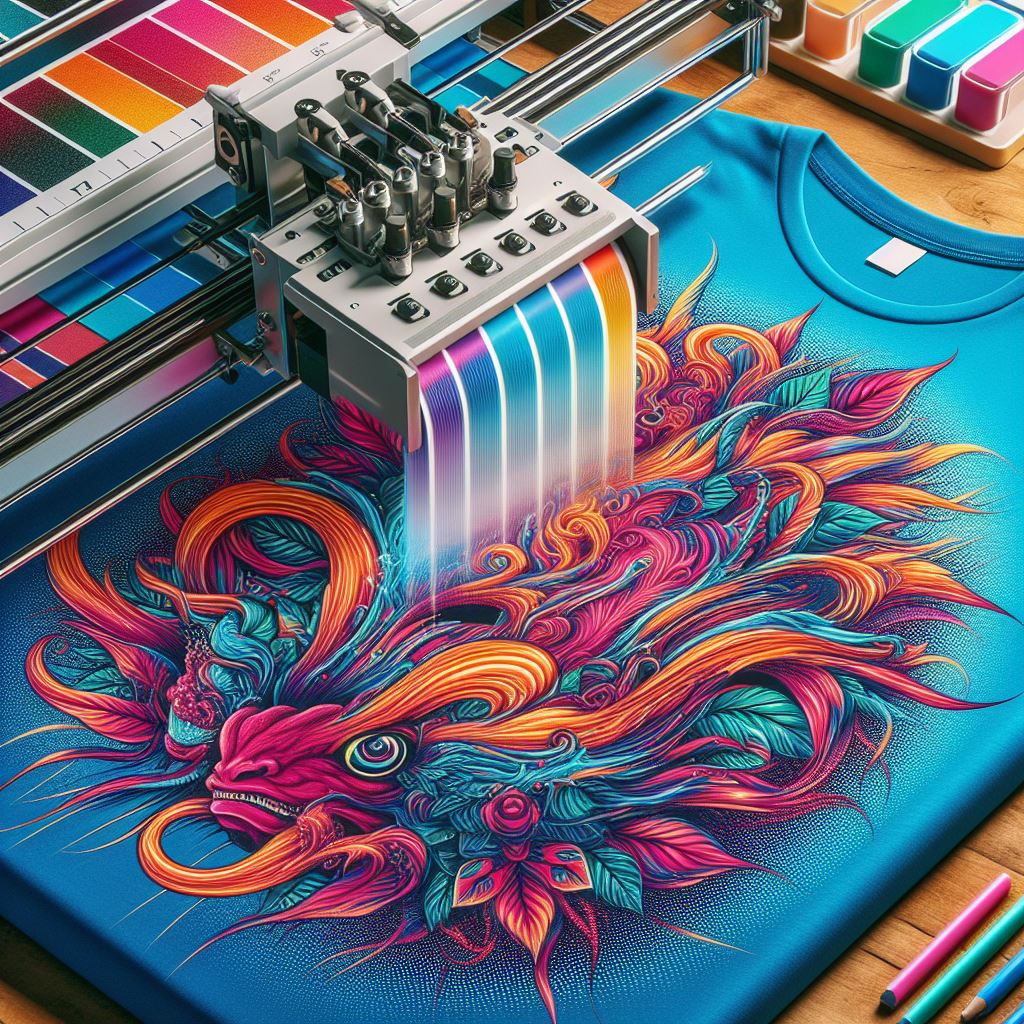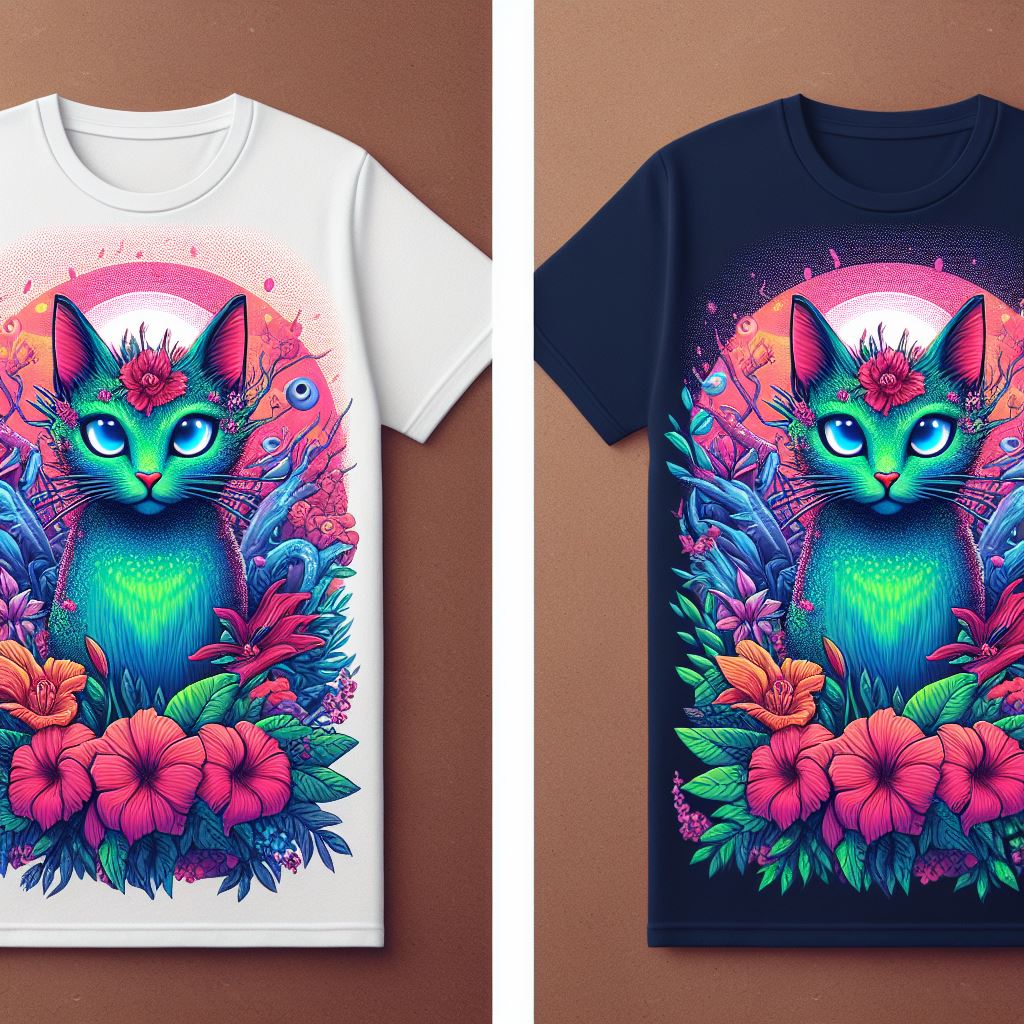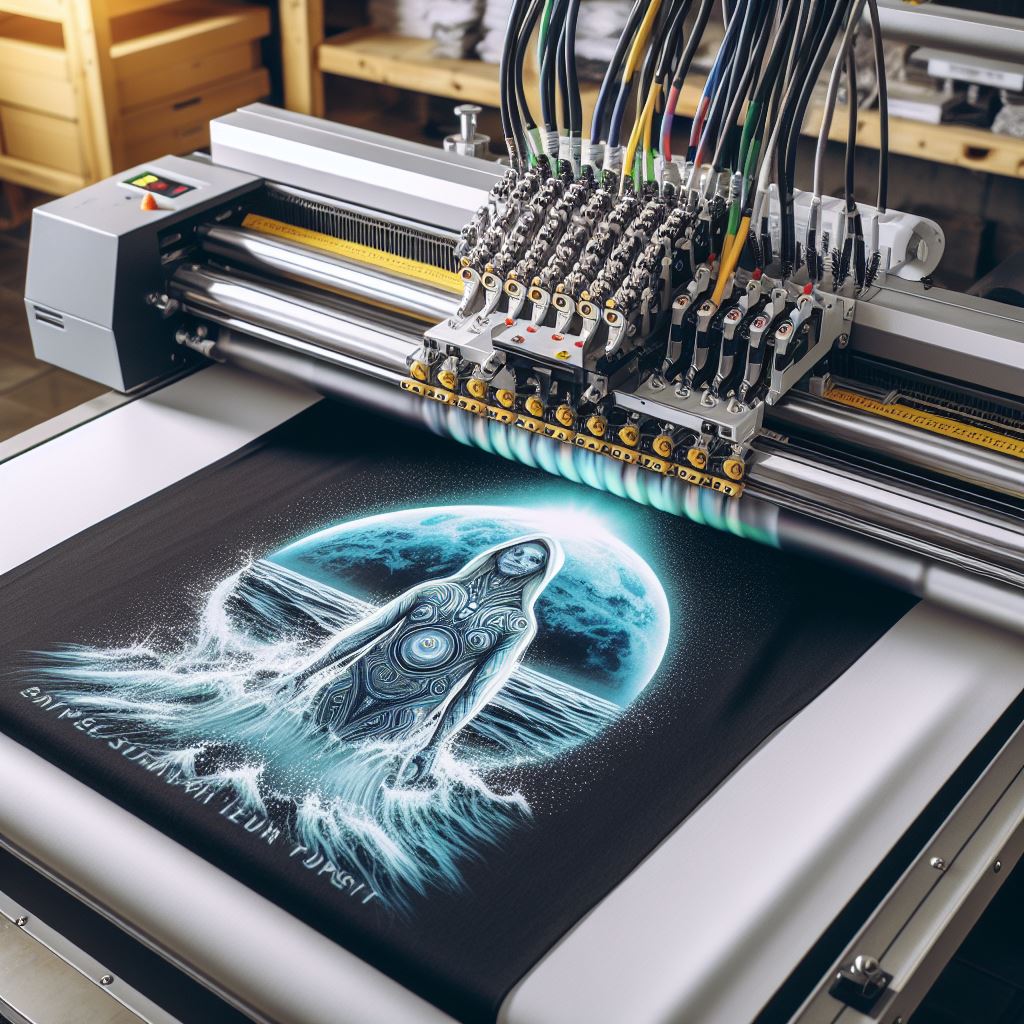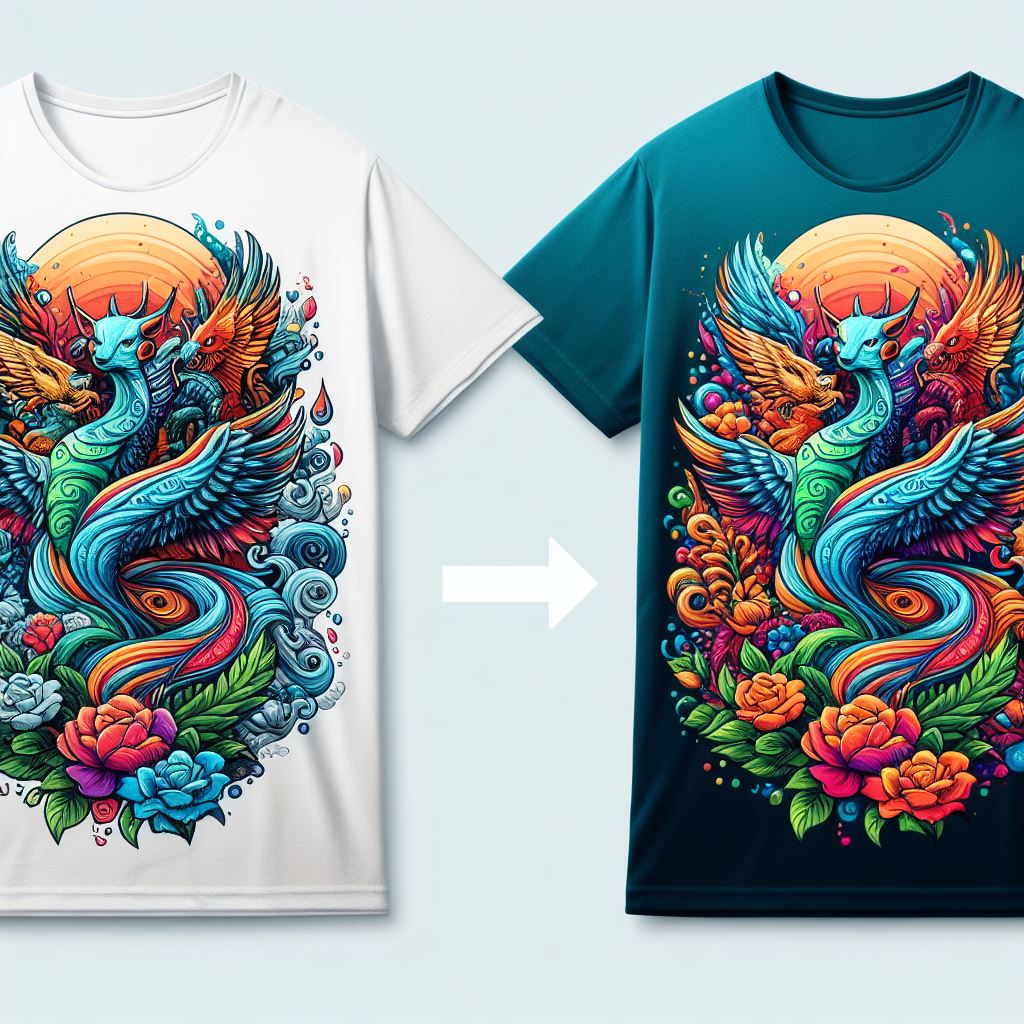Welcome to the world of Direct to Garment (DTG) printing, a game-changer in the custom apparel industry. DTG printing is a digital process that allows for detailed designs to be printed directly onto your favorite T-shirts. When considering how much does it cost to print a DTG shirt, it's essential to understand the various elements that influence the final price.
Several factors impact the cost of DTG printing. These include the quality of the shirt material, the complexity of the design, the number of colors used, and the quantity of shirts ordered. Additionally, the print size and location on the shirt can affect the price, as larger or more complex prints require more resources and time.
For those looking to send more sales to their website, offering high-quality DTG printed shirts can be an excellent addition. Not only does DTG allow for vibrant and precise designs, but it also caters to both small and large orders, making it a versatile option for businesses and events alike.
The Basics of DTG Printing Technology and Pricing

DTG printing technology stands out for its ability to print vibrant, high-fidelity images directly onto textiles. Unlike traditional screen printing, which requires screens to be made for each color, DTG operates more like a paper printer, applying a spectrum of colors in a single pass. This makes it ideal for designs that feature a wide range of hues and intricate details.
When it comes to pricing, DTG is often calculated on a per-shirt basis. The cost includes the preparation of the artwork, the pretreatment process, which prepares the fabric for ink absorption, and the actual printing. Since there are no setup fees typically associated with screen printing, DTG can be more cost-effective for smaller runs. However, for larger orders, the cost per shirt can decrease, benefiting customers who need bulk quantities.
Understanding the mechanics behind DTG printing helps in comprehending the pricing structure. The initial investment in DTG equipment is significant, and the specialized inks used are often more expensive than those for screen printing. Additionally, the level of detail and color range in the design can lead to variations in price, as more intricate artwork requires more ink and longer printing times.
Material and Production Costs in DTG Printing

The material and production costs are pivotal factors in determining how much it costs to print a DTG shirt. The type of garment selected for printing can significantly affect the overall price. High-quality t-shirts made from premium materials, such as 100% cotton or a cotton-polyester blend, are generally preferred for DTG printing due to their ability to better absorb the ink, resulting in a more vibrant and lasting design.
Moreover, the production process of DTG printing includes several steps that contribute to the cost. Pre-treatment of the shirt is essential for ensuring the ink adheres properly and doesn't wash out, which introduces an additional material and labor expense. After pre-treatment, the actual printing process involves the use of costly DTG printers and specialized inks, which are formulated to be soft to the touch and color-fast, but come with a higher price tag compared to conventional dyes.
Maintenance and operation of the DTG printers also play a role in the cost. These machines require regular upkeep to function at their best, which includes cleaning and replacing parts when necessary. The labor involved in operating the printers, quality control, and the final heat-curing process to set the ink are all factored into the production costs. Together, these elements form the crux of the material and production expenses that ultimately influence the final cost of DTG printed shirts.
Comparing DTG Printing Prices with Other Techniques
When evaluating how much it costs to print a DTG shirt, it's beneficial to compare it with other printing techniques such as screen printing, heat transfer, and sublimation printing. Each method comes with its own set of costs and benefits, tailored to different needs and scales of production.
Screen printing, for instance, involves creating stencils and using separate screens for each color, which can be cost-effective for large orders but less so for small, multi-color designs due to the setup required. Heat transfer is another popular method where designs are printed onto special paper and then transferred to the fabric using heat and pressure. It's a viable option for small runs and complex color applications but tends to be less durable than DTG or screen prints.
Sublimation printing offers vibrant, full-color results and is best suited for polyester garments. Unlike DTG, which is ideal for cotton, sublimation dye becomes part of the fabric, offering a no-feel print that is exceptionally durable. The initial investment for sublimation equipment can be high, but the per-unit cost may decrease with larger production volumes.
DTG stands out for its ability to print highly detailed, full-color images directly onto the garment, with no minimum order quantity. This makes it a superb choice for custom or small batch orders. While the cost per shirt might be higher than bulk screen printing orders, DTG eliminates the need for setup fees, making it cost-effective for short runs with complex designs.
In summary, the choice of printing technique hinges on several factors including order size, color complexity, garment material, and durability requirements. DTG printing shines for its convenience, quality, and flexibility, especially when the job calls for intricate, colorful designs on a smaller scale.
How Quantity Affects DTG Printing Cost Per Shirt

The quantity of shirts ordered plays a pivotal role in determining the cost per item in DTG printing. Unlike traditional printing methods that typically offer price breaks at higher quantities due to the initial setup being spread across more units, DTG printing operates differently.
Since DTG printers print each shirt individually without the need for setup processes like creating screens, the cost per shirt remains relatively stable regardless of the order size. This is advantageous for those looking to place small orders, as they won't be penalized with higher prices often associated with low volumes in other print methods.
However, for larger orders, some DTG printing services may offer scaled pricing. This is because, even though there is no setup cost, the time and resources spent on printing a larger order can be optimized, allowing for some savings to be passed on to the customer. It's important to note that these discounts may not be as steep as those seen with methods like screen printing.
Additionally, the cost-effectiveness of DTG printing for bulk orders may also be affected by factors such as ink usage - with more detailed and colorful designs requiring more ink, thus potentially increasing the price. Whereas, simple designs with minimal color variation might not see as much of a cost change between small and large orders.
Ultimately, when considering DTG printing, customers should evaluate their needs for print quality, design complexity, and order size. While DTG may not always be the most cost-effective option for high-volume orders, its consistency in quality and pricing makes it an attractive choice for those requiring flexibility and precision in their prints.
Additional Charges and Hidden Costs in DTG Printing

When diving into the world of DTG printing, it's essential to be aware of potential additional charges and hidden costs that can affect the overall price of your order. These costs can sneak up on unsuspecting customers, turning what seemed like an economical option into a pricier endeavor.
One common hidden cost is the pretreatment of garments. DTG printers require a special pretreatment on dark fabrics to ensure the vibrancy and durability of the print. Some printers include this cost in their quotes, while others may charge separately for it.
Another potential extra cost is for artwork setup. If your design needs significant adjustment or optimization for DTG printing, you might incur an artwork fee. Similarly, rush orders can also lead to additional costs, as they require the printer to prioritize your job over others, often working overtime or disrupting their standard workflow.
Shipping and handling fees should also be considered, especially if you are ordering from a distance or require expedited shipping. While some companies offer free shipping on orders over a certain amount, smaller orders can have considerable shipping costs attached.
To avoid surprises, always request a detailed quote that breaks down all the costs associated with your order. Remember, at The T-Shirt Army, we pride ourselves on transparency and customer satisfaction. Our team is ready to bring your ideas to life with precision, offering high-quality DTF transfers that are vibrant, durable, and long-lasting. Don't let hidden costs deter you from achieving the perfect custom apparel for your business or event. Order now and experience the difference with our premium DTF transfers!

